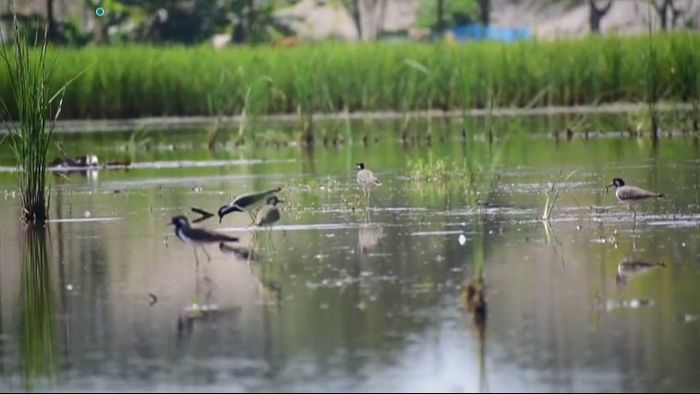Bedeti Wetland: A Migratory Bird Paradise
Bedeti Wetland, a serene sanctuary in the state, plays host to over 150 bird species, including five threatened ones. The wetland is not just a refuge for these species, but also a vibrant hub for residential and migratory birds.

- May 19, 2024,
- Updated May 19, 2024, 9:42 PM IST
Nestled in a serene corner of the state, the Bedeti Wetland emerges as a sanctuary teeming with avian diversity, playing host to more than 150 bird species. Among these are five threatened species, underscoring the wetland's critical role in bird conservation. Over the past three years, a study by birdwatcher Pranoy Mahanta have revealed the presence of four globally threatened species, along with numerous notable residential and migratory birds.
Globally Threatened Species
Among the illustrious residents, the Lesser Adjutant Stork (Leptoptilos javanicus), previously listed as Vulnerable by the IUCN, stands out. This large wading bird of the Ciconidae family has made the wetland its home, benefitting from its rich ecosystem. Alongside the stork, the Greater Spotted Eagle (Clanga clanga), categorized as Vulnerable, has also been sighted. The Woolly-necked Stork and the majestic Himalayan Griffon are other globally threatened species that grace the wetland.
Residential and Migratory Birds
The Bedeti Wetland is not just a refuge for threatened species but also a vibrant hub for numerous residential and migratory birds. Notable residents include the Pheasant-tailed Jacana (Hydrophasianus chirurgus), Glossy Ibis (Plegadis falcinellus), and Common Moorhen (Gallinula chloropus). The sight of Cotton Pygmy Goose (Nettapus coromandelianus), with 14 offspring recorded this year, along with 30 Bronzed-winged Jacana (Metopidius indicus) chicks, speaks volumes about the wetland's nurturing environment.
Migratory birds bring a seasonal spectacle to Bedeti. The wetland becomes a winter haven for species like the Grey-headed Lapwing (Vanellus cinereus), often seen in large numbers. Wintering migrants such as the Pacific Golden Plover, Bar-headed Geese (Anser indicus), Ruddy Shelduck, and Gadwalls add to the wetland’s allure.
First Sightings and Unique Species
The Bedeti Wetland also boasts unique sightings, such as the first record of the Yellow Bittern in the Greater Behali area. Other significant species include the Crested Goshawk (Accipiter trivirgatus), Hen Harrier (Circus cyaneus), Eurasian Kestrel (Falco tinnunculus), Black Kite (Milvus migrans), and the striking Chestnut-headed Bee-eater (Merops leschenaulti). The wetland's richness is further evidenced by the presence of the Eurasian Hoopoe (Upupa epops), Olive-backed Pipit (Anthus hodgsoni), and Short-toed Snake Eagle (Circaetus gallicus).
Biodiversity and Ecosystem Health
Beyond its avian inhabitants, the Bedeti Wetland supports a variety of fish, turtles, mammals, and flora, indicating a robust and healthy ecosystem. The transformation of the wetland into a pink lake with blooming lotuses in December adds to its natural splendor.
Conservation Efforts
Despite its ecological significance, the Bedeti Wetland faces threats from poaching and habitat destruction. Birds like Gadwalls, Egrets, Pond Herons, and Whistling Ducks are often targeted for meat. However, concerted conservation efforts by Nature's Bonyapran and the Forest Department are making strides in protecting this haven. Initiatives include awareness programs, dismantling poaching nets, and monitoring the wetland. Additionally, the declaration of the area as "Joiba Boisitra Sangrasit Eleka" (biodiversity protected area) marks a significant step in preserving its unique biodiversity.
A Beacon of Hope
In an era where many wetlands are vanishing, the Bedeti Wetland stands as a beacon of hope, showcasing a thriving tapestry of faunal and floral diversity. It exemplifies the delicate balance of nature and the importance of vigilant conservation efforts. As we continue to uncover the secrets of Bedeti, it reminds us of our responsibility to protect and cherish these natural sanctuaries for future generations.